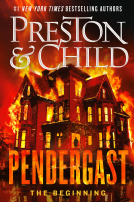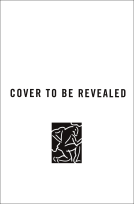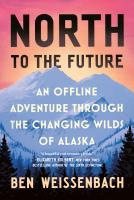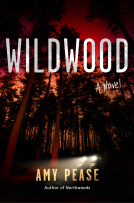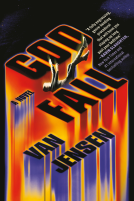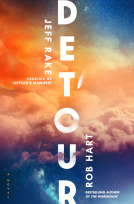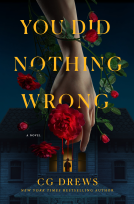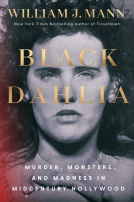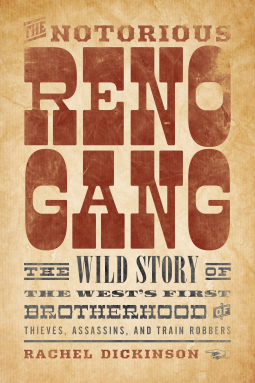
The Notorious Reno Gang
The Wild Story of the West's First Brotherhood of Thieves, Assassins, and Train Robbers
by Rachel Dickinson
This title was previously available on NetGalley and is now archived.
Send NetGalley books directly to your Kindle or Kindle app
1
To read on a Kindle or Kindle app, please add kindle@netgalley.com as an approved email address to receive files in your Amazon account. Click here for step-by-step instructions.
2
Also find your Kindle email address within your Amazon account, and enter it here.
Pub Date May 01 2017 | Archive Date May 19 2017
Rowman & Littlefield | Lyons Press
Description
The true story of the world’s first robbery of a moving train, and the real origins of the Wild West
They
were the first outlaws to rob a moving train. But from 1864 to 1868,
the Reno brothers and their gang of counterfeiters, robbers, burglars,
and safecrackers also held the town of Seymour, Indiana, hostage, making
a large hotel near the train station their headquarters. When the gang
robbed the Adams Express car of the Ohio & Mississippi Railroad on
the outskirts of Seymour on October 6, 1866, it shocked the world—and
made other burgeoning outlaws like Jesse James sit up and take notice. The extraordinary—and extra-legal—efforts to take them out
defined the term “frontier justice.” From the first report of the
robbery, Allan Pinkerton’s operatives were on the scene, followed by
kidnappings, lynchings, and an extradition from Canada to Indiana that
caused an international incident. In the end, ten members of the Reno
Gang were hanged, including three of the Reno brothers. And no one was
ever charged with the murders.
The Notorious Reno Gang
tells the complete story for the first time, revealing how these
gangsters, Pinkerton’s National Detective Agency, and the little city of
Seymour ushered in the Wild West.
Available Editions
| EDITION | Hardcover |
| ISBN | 9781493026395 |
| PRICE | $22.95 (USD) |
Links
Average rating from 7 members
Featured Reviews
 Andy L, Reviewer
Andy L, Reviewer
The Reno gang terrified the American Midwest during and after the Civil War. As the new railroads began to haul around significant amounts of money, they were a natural target for a new breed of outlaw. Learning as they went, the Reno brothers learned to rob express cars, and anything else that wasn’t nailed down.
=== The Good Stuff ===
* The book is a great anecdotal history of the latter 19th century United States. While nominally a civilized country where the “rule of law” was predominant, there was no shortage of violence on both sides of the law. It was evidently considered “justice” to break into a jail and lynch someone if the court sentence was viewed as being too lenient.
* Rachel Dickinson concentrates her story on the Reno brothers, a group of hoodlums from Southern Indiana who never met a crime they didn’t like. They were swindlers, train-robbers, gambling cheats and probably a few other things. They had learned to manipulate the justice system, and for the longest time, it was beyond the law enforcement of the day to imprison them for any length of time.
* My favorite part of the book, however was not the Reno brothers, but rather the look at the lifestyle of the times. Dickinson gives a look at life in a small town, the struggle to grow and deal with the railroads, and the many forms of commerce and industry that were beginning to sprout. The book was a front row seat as one town withered away, and a new town was built, all because of the routing of a railroad or two. I enjoyed reading about the efforts to sell products in New Orleans, which involved building a raft, breaking it up and selling the wood in New Orleans, and then walking or taking a steamship back to Indiana.
* The crime and shenanigans of the Reno Brothers figure promptly in the book. Their criminal exploits, intimidation of townspeople and witnesses, and ability to beat the Justice system are all well chronicled, as is the rise of detective agencies to combat them. Specifically, the rise of Allen Pinkerton and his Agency are chronicled, including how it “grew up” with the Reno Gang.
=== The Not-So-Good Stuff ===
* The biggest problem with the book is that I just didn’t find the Reno gang all that interesting. They were scoundrels, cheats, and violent criminals, but I found them to be rather boring. They didn’t have the notoriety of Jesse James, and certainly not the panache of John Dillinger. They evoked no sympathy or identification as “All American” hoodlums. When Pat Garrett shot Billy the Kid, it was the passing of an American icon. When they hung the Reno brothers, it was a relief.
* As with all books dealing with criminals of this era, it is almost impossible to tease out fact from fiction. Dickinson does a credible job, and her research and facts seem well grounded, but you just never quite know.
=== Summary ===
The book was interesting, and I enjoyed reading it-although more as a anecdotal history of the period than a specific chronicle of the Reno gang. It is about as well researched as possible, and it certainly came across as believable and accurate. I would have liked to see more discussion of some of the ancillary topics (Allen Pinkerton, for one), but since I didn’t write the book, I’ll accept it for what it was. Anyone with an interest in this time period, or 19th century crime and law enforcement would probably enjoy it.
=== Disclaimer ===
I was able to read an advance copy through the courtesy of the publisher and NetGalley.
The Notorious Reno Gang
Rachel Dickinson
4/5
A Great American Story
The Reno gang terrified the American Midwest during and after the Civil War. As the new railroads began to haul around significant amounts of money, they were a natural target for a new breed of outlaw. Learning as they went, the Reno brothers learned to rob express cars, and anything else that wasn’t nailed down.
=== The Good Stuff ===
* The book is a great anecdotal history of the latter 19th century United States. While nominally a civilized country where the “rule of law” was predominant, there was no shortage of violence on both sides of the law. It was evidently considered “justice” to break into a jail and lynch someone if the court sentence was viewed as being too lenient.
* Rachel Dickinson concentrates her story on the Reno brothers, a group of hoodlums from Southern Indiana who never met a crime they didn’t like. They were swindlers, train-robbers, gambling cheats and probably a few other things. They had learned to manipulate the justice system, and for the longest time, it was beyond the law enforcement of the day to imprison them for any length of time.
* My favorite part of the book, however was not the Reno brothers, but rather the look at the lifestyle of the times. Dickinson gives a look at life in a small town, the struggle to grow and deal with the railroads, and the many forms of commerce and industry that were beginning to sprout. The book was a front row seat as one town withered away, and a new town was built, all because of the routing of a railroad or two. I enjoyed reading about the efforts to sell products in New Orleans, which involved building a raft, breaking it up and selling the wood in New Orleans, and then walking or taking a steamship back to Indiana.
* The crime and shenanigans of the Reno Brothers figure promptly in the book. Their criminal exploits, intimidation of townspeople and witnesses, and ability to beat the Justice system are all well chronicled, as is the rise of detective agencies to combat them. Specifically, the rise of Allen Pinkerton and his Agency are chronicled, including how it “grew up” with the Reno Gang.
=== The Not-So-Good Stuff ===
* The biggest problem with the book is that I just didn’t find the Reno gang all that interesting. They were scoundrels, cheats, and violent criminals, but I found them to be rather boring. They didn’t have the notoriety of Jesse James, and certainly not the panache of John Dillinger. They evoked no sympathy or identification as “All American” hoodlums. When Pat Garrett shot Billy the Kid, it was the passing of an American icon. When they hung the Reno brothers, it was a relief.
* As with all books dealing with criminals of this era, it is almost impossible to tease out fact from fiction. Dickinson does a credible job, and her research and facts seem well grounded, but you just never quite know.
=== Summary ===
The book was interesting, and I enjoyed reading it-although more as a anecdotal history of the period than a specific chronicle of the Reno gang. It is about as well researched as possible, and it certainly came across as believable and accurate. I would have liked to see more discussion of some of the ancillary topics (Allen Pinkerton, for one), but since I didn’t write the book, I’ll accept it for what it was. Anyone with an interest in this time period, or 19th century crime and law enforcement would probably enjoy it.
 Deb N, Reviewer
Deb N, Reviewer
I received this book courtesy of Net Galley and Rowman & Littlefield, the publisher. I enjoy historical genre books and this filled the niche. It is more than a story about the Reno Gang.
It includes historical information about statehood (for Indiana, Ohio, Illinois) and formation of the town of Seymour, Indiana. The book provides insight into how the monetary system “grew up”:
“Imagine a time when the states had responsibility for chartering bank is, a time when neither a federal banking system nor federal regulations covered banking.”
You get a feel of the deep animosity in the country with the civil war. The need for the establishment of the Secret Service was included. It provides insight into the Pinkerton Agency and train robberies. You get a complete understanding on the lack of societal control of violence. Vigilantes and criminals were prevalent; prisons were poorly constructed. Many crooks escaped prison, posted bond and never returned (unless arrested again).
The Reno family was not a very nice family. The parents, Wilkinson and Julia Ann, were split up because of domestic violence. There were five sons (all crooks) and one daughter. The Reno “gang” extended beyond the five sons to friends and cohorts. The book flows easily and keeps your interest in learning about the Reno gang. “John [Reno] and his brother spent years making a mockery of the justice system.” “The gang created an atmosphere where the townspeople became somehow convinced that they deserved to be mistreated.”
Many times the scenery’s description is extremely well done. You can feel, see, and smell the setting: “…spring melted into summer, the muddy streets of the city that could formerly bury a carriage wheel up to the hug became dry and dusty, although they were never without a generous layer of manure from the many horses that pulled carriages and wagons. The fetid smells…”
Throughout this book, you definitely get a feel of life in the Wild West. For those interested in history, it’s worth reading.
Readers who liked this book also liked:
John Kotter; Holger Rathgeber
Business, Leadership, Finance, Nonfiction (Adult)

